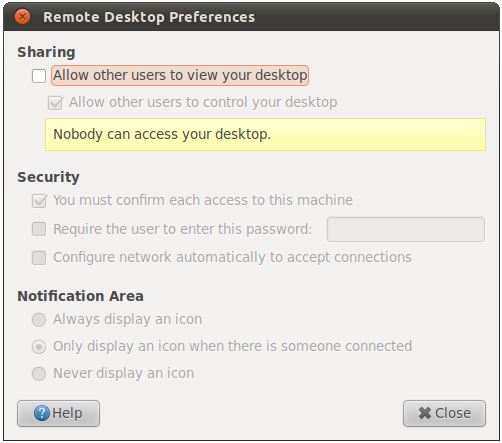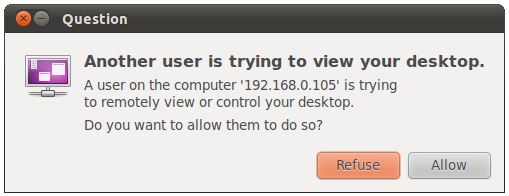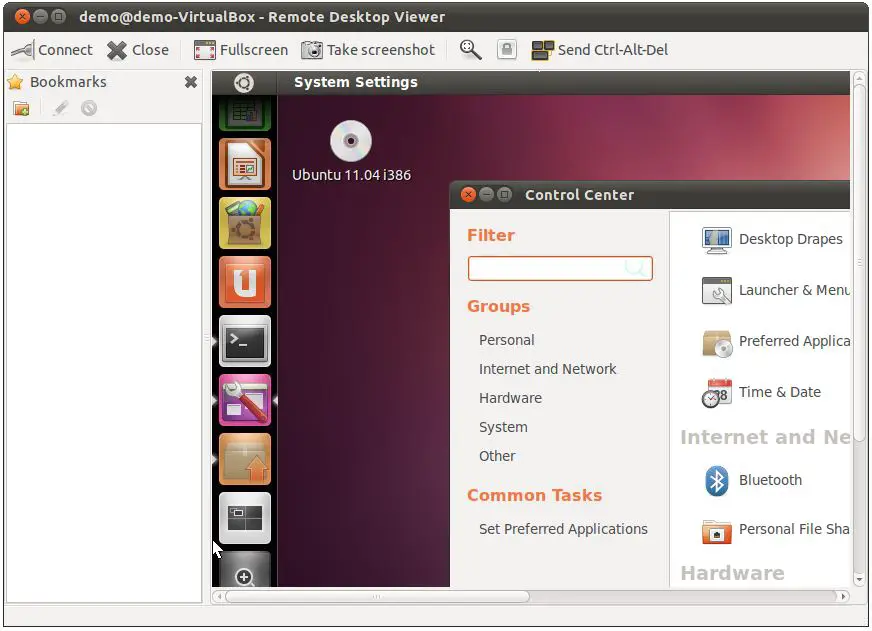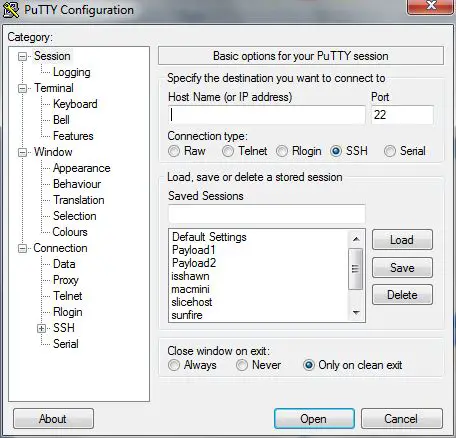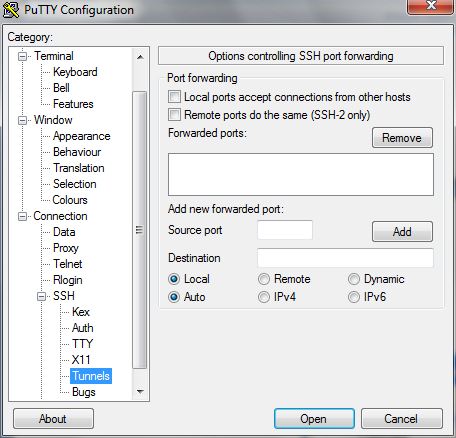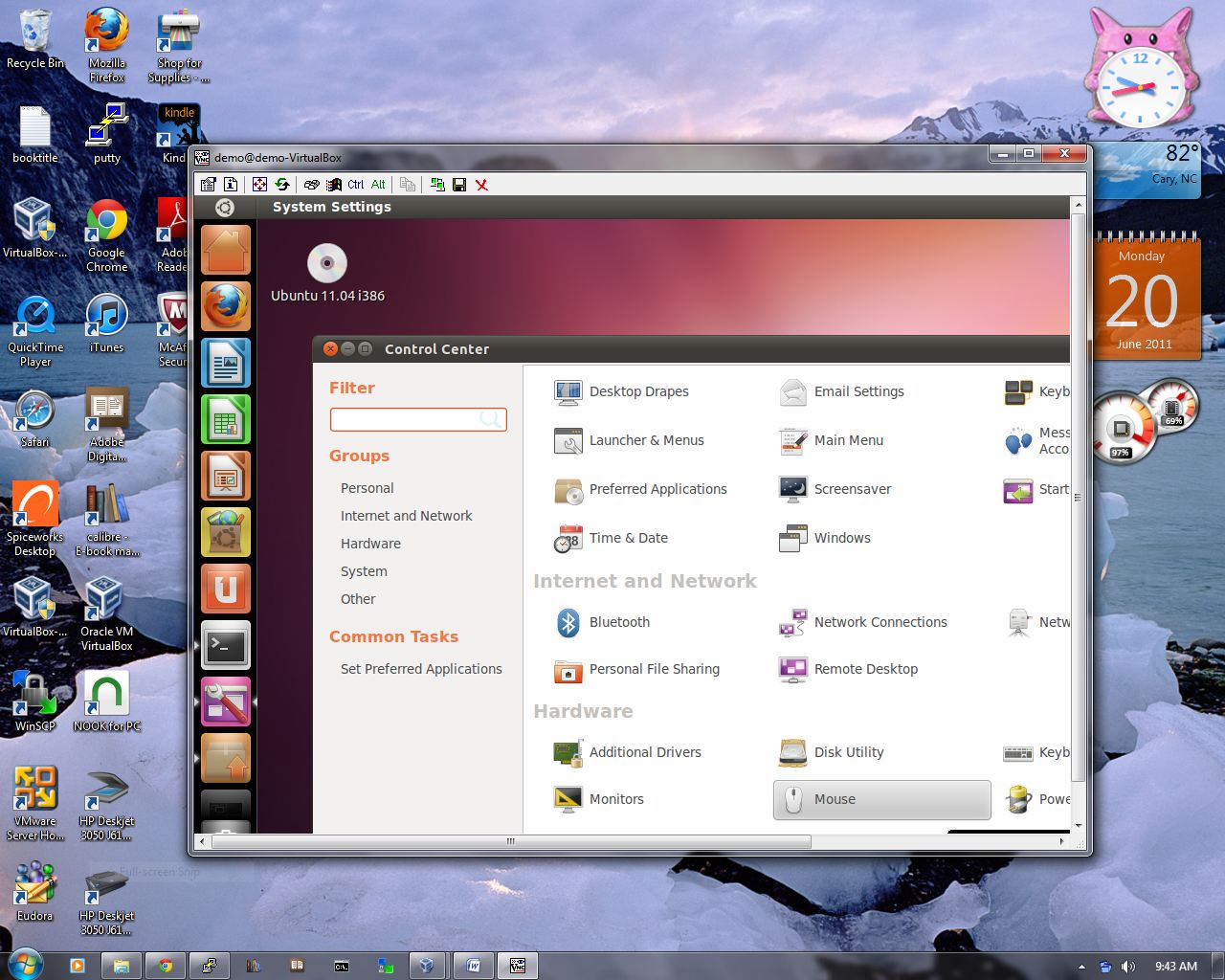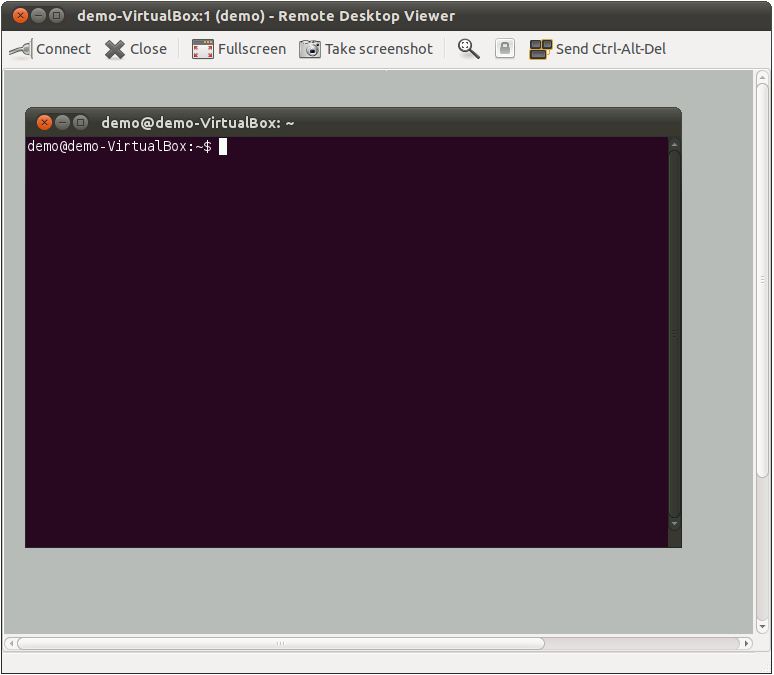Difference between revisions of "Remote Access to the Ubuntu 11.04 Unity Desktop"
(New page: Ubuntu 11.04 includes remote desktop access capabilities. This provides two extremely useful features. Firstly it enables you or another person to view and interact with your Ubuntu Unity ...) |
(No difference)
|
Revision as of 18:48, 20 June 2011
Ubuntu 11.04 includes remote desktop access capabilities. This provides two extremely useful features. Firstly it enables you or another person to view and interact with your Ubuntu Unity desktop environment from another computer system either on the same network or over the internet. This is useful if you need to work on your computer when you are away from your desk, for example while traveling. It is also useful in situations where a co-worker or IT support technician needs access to your desktop to resolve a problem. Desktop viewer apps are now available for smartphone and tablets such as the iPad providing the added convenience of remote access to your Ubuntu system from mobile devices.
Secondly, in addition to providing access to your primary desktop (the one you see when you switch on your monitor every morning) it also enables you to create multiple desktops and connect to them remotely.
The Ubuntu remote desktop functionality is based on technology called Virtual Network Computing (VNC) and in this chapter we will cover the key aspects of configuring and using remote desktops with Ubuntu 11.04. It is important to note that there are both secure and insecure ways to access a remote desktop. Although both approaches will be covered, the secure method is strongly recommended when accessing remote desktops over an internet or other insecure connection.
Activating Unity Remote Desktop Access
The first step in setting up remote desktop access is to activate it and define some basic security settings. These settings are configured in the Remote Desktop Preferences dialog. To access this dialog, open the Control Center by clicking on the power button in the top right hand corner of the screen and select System Settings from the resulting menu. Within the control center window scroll down to the Internet and Network category and click on Remote Desktop. Once selected the following window will appear:
The Remote Desktop Preferences dialog provides the following configuration options:
- Allow others to view your desktop - Activates remote desktop access for viewing purposes.
- Allow other users to control your desktop - Allows users accessing your remote desktop to control the desktop. In other words the remote user can do anything to your desktop that they want using their mouse and keyboard as if they were sitting physically at the local system. When this option is disabled, the remote user can see what is happening on the desktop, but is unable to interact with it using the keyboard and mouse.
- You must confirm each access to this machine - When selected, this option causes a dialog to appear warning you of an attempt by a remote user to connect and prompting you to confirm or deny the connection. If you are likely to want to log in remotely you will need to turn this off since you will not be at the local system to accept your own connection.
- Require the user to enter this password - Specifies a password which must be entered by the remote user to access your desktop. It is strongly advised that you select this option and specify a password.
- Always display icon - Causes the remote desktop icon to appear in the Notification area of the top status bar when remote desktop access is enabled (even when a remote user is not connected).
- Only display an icon when there someone is connected - Displays an icon on the Notification area of the top status bar when a user is remotely connected to the desktop.
- Never display an icon - The Notification icon is never displayed regardless of the current state of the remote desktop system.
Once the Allow others to view your desktop has been enabled, this screen also displays the command to run on the remote system to access the desktop.
Once you have configured Remote Desktop access you are ready to try connecting.
Secure and Insecure Remote Desktop Access
In this chapter we will cover both secure and insecure remote desktop access methods. Assuming that you are accessing one system from another within the context of a secure internal network then it is generally safe to use the insecure access method. If you plan to access your desktop remotely over any kind of public network you must use the secure method of access to avoid your system and data being compromised.
Accessing a Remote Ubuntu Desktop using Vinagre
As mentioned previously there are both secure and insecure methods for accessing a remote desktop. In this section we assume that the desktop is being accessed by a remote system on the same local network where security is less of a concern. See the section later in this chapter for establishing a secure connection if you are connecting from a system outside your firewall.
A connection to the remote desktop may be performed by running either the vncviewer tool, or the newer vinagre on the system from which the remote desktop is to be accessed. On Ubuntu 11.04 systems, vinagre is installed by default. On other systems, however, it may need to be manually installed. For example to install vinagre on a Red Hat Linux, CentOS or Fedora system, execute the following command in a terminal window:
su yum install vinagre
To access a remote desktop, open a Terminal window (Ctrl-Alt-T) and enter the command specified in the Remote Desktop Preferences dialog, for example:
vinagre hostname:0
where hostname is either the hostname or IP address of the remote system.
If you configured the remote system to prompt to approve a connection a dialog will appear on the desktop of that system:
Until the connection is approved the vinagre session will wait. Once approved, or if no approval is required, vinagre will prompt for the password (assuming one was defined). Enter the password and vinagre will appear containing the desktop from the remote system. If remote desktop control was enabled you can interact with the desktop as if you were sitting at the remote screen. The following figure illustrates a vinagre session running on an Ubuntu system attached to a remote desktop running on another, remote, Ubuntu system. Note that only part of the remote desktop is displayed. The entire desktop may be viewed by clicking on the Full Screen toolbar button.
Attaching to a Remote Unity Desktop using vncviewer
Vinagre is a relatively new tool and has a number of advantages over the older vncviewer tool (such as the ability to manage concurrent connections to multiple remote desktops). For those who prefer to use a simpler interface, or use a system for which vinagre is not easily obtainable, vncviewer makes a more than adequate alternative.
As with vinagre, vncviewer is not installed by default on many systems. To install vncviewer on Red Hat, CentOS and Fedora systems, execute the following commands in a terminal window:
su yum install vnc
Similarly, to install vncviewer on an Ubuntu 11.04 system:
sudo apt-get install xvnc4viewer
Once installed, run the command using the following syntax where hostname is the host name or IP address of the remote system and port is the port number assigned for access to the desktop (for the default desktop the port number can either omitted, or specified as 5900).
vncviewer hostname:port
If the remote desktop was configured to require a password, vncviewer will prompt for this before displaying the desktop. So far in this chapter we have assumed that the remote desktop was being accessed from a Linux or Unix system. Access is also possible from a Windows system.
Accessing a Remote Ubuntu Desktop from a Windows System
In order to access a Linux remote desktop from a Windows system the first step is to install a Windows VNC client on the Windows system. There are a number of VNC packages available for Windows. In this chapter we will look at TightVNC (http://www.tightvnc.com).
Download and install TightVNC on your Windows system. Once installed, launch the TightVNC Viewer and in the resulting Connection details dialog enter the IP address or hostname of the remote system and press OK. Enter the password if one is required. The screen should load and display the remote desktop.
You may also enter the port number in the form hostname::5900 (screen 0 in VNC uses port 5900). TightVNC assumes port 5900 if none is specified but when we look at setting up additional desktops later in this chapter we will need to specify port numbers in order to connect.
Establishing a Secure Remote Desktop Session
The remote desktop configurations we have explored so far in this chapter are considered to be insecure because no encryption is used. This is acceptable when the remote connection does not extend outside of an internal network protected by a firewall perimeter. When a remote session is required over an internet connection a more secure option is needed. This is achieved by tunneling the remote desktop through a secure shell (SSH) connection.
Before a secure connection is established the SSH server must be installed on the system to which the connection is to be established. For detailed steps on installing the SSH server on an Ubuntu system see Configuring Ubuntu 11.04 Remote Access using SSH.
Once the SSH server is installed and active it is time to move to the other system. At the other system, log in to the remote system within a Terminal window using the following command, which will establish the secure tunnel between the two systems:
ssh -L 5900:localhost:5900 hostname
In the above example, hostname is either the host name or IP address of the remote system. Log in using your account and password. The secure connection is now established and it is time to launch vncviewer so that it uses the secure tunnel. Leaving the ssh session running in the other terminal window, launch another terminal and enter the following command to use vncviewer:
vncviewer localhost::5900
Alternatively, to use vinagre:
vinagre localhost:5900
The vncviewer session will prompt for a password if one is required, and then launch the corresponding viewer providing secure access to your desktop environment.
In the above example we left the ssh tunnel session running in a terminal window. If you would prefer to run the ssh session in the background, this can be achieved by using the –f and –N flags when initiating the connection:
ssh –f –N -L 5900:localhost:5900 hostname
The above command will prompt for a password for the remote server and then establish the connection in the background, leaving the terminal window available for other tasks.
If you are connecting to the remote desktop from outside the firewall keep in mind that the IP address for the ssh connection will be the external IP address provided by your ISP, not the LAN IP address of the remote system (since this IP address is not visible to those outside the firewall). You will also need to configure your firewall to forward port 22 (for the ssh connection) to the IP address of the system running the desktop. It is not necessary to forward port 5900. Steps to perform port forwarding differ between firewalls, so refer to the documentation for your firewall, router or wireless base station for details specific to your configuration.
Establishing a Secure Remote Desktop Session from a Windows System
A similar approach is taken to establishing a secure desktop session from a Windows system. Assuming that you have a VNC client installed (as described above) the one remaining requirement is a Windows ssh client. A popular ssh client for Windows is PuTTY which may be downloaded from:
http://www.chiark.greenend.org.uk/~sgtatham/putty/
Once PuTTY is downloaded and installed the first step is to set up a secure connection between the Windows system and the remote Linux system with appropriate tunneling configured. When launched, PuTTY displays the following screen:
Enter the IP address or host name of the remote host (or the external IP address of the gateway if you are connecting from outside the firewall). The next step is to set up the tunnel. Click on the + next to SSH in the Category tree on the left hand side of the dialog and click on Tunnels. The screen should appear as follows:
Enter 5900 as the Source port and localhost:5900 as the Destination and click on Add. Finally return to the main screen by clicking on the Session category. Enter a name for the session in the Saved Sessions text field and press save. Click on Open to establish the connection. A terminal window will appear with the login prompt from the remote system. Enter your user login and password credentials.
The SSH connection is now established. Launch the TightVNC viewer and enter localhost::5900 in the VNC Server text field and click on Connect. The viewer will establish the connection, prompt for the password and then display the desktop. You are now accessing the remote desktop of a Linux system on Windows via a secure tunnel. The following figure illustrates an Ubuntu Unity desktop accessed via a Windows 7 system:
Creating Additional Desktops
In the examples so far we have only covered remote access to the primary desktop. By primary desktop we mean the desktop you see when you sit at your computer and turn on the monitor. While this is fine for a single user system we should not lose sight of the fact that Linux is a multi-user operating system and it will often be necessary for more than one person to have remote desktop access at a time. While it might be fun to watch everyone fight over the mouse pointer as they share the same desktop it is clear that not much work will get done. The solution to this is to run multiple desktops for the users to connect to.
New desktop environments are created using the vncserver utility. If vncserver is not already installed, it may be installed from a terminal window as follows:
sudo apt-get install vnc4server
Once the VNC server package is installed, the next step is to assign a password to protect the desktops. This can be achieved using the vncpasswd tool. Run this tool from the command-line prompt in a terminal window and enter the password of your choice. The desktop we have used so far in this chapter is desktop :0. New desktops must be assigned different numbers. For example to launch desktop :1 run the following command from a terminal window command-line prompt:
vncserver :1
This will start a new desktop in the background ready for a remote user to connect to. To connect to the desktop follow the steps for connecting to desktop :0 outlined above but this time use port 5901 instead of port 5900 (you will similarly use port 5902 for desktop :2 and so on).
When the desktop appears you will notice that it doesn't look much like the standard desktop:
The problem here is that we need to configure the VNC session to launch the correct desktop. To do this shutdown the VNC desktop session on the remote server as follows:
vncserver -kill :1
Next go to your home folder and edit the $HOME/.vnc/xstartup file. This will look similar to the following file:
#!/bin/sh # Uncomment the following two lines for normal desktop: # unset SESSION_MANAGER # exec /etc/X11/xinit/xinitrc [ -x /etc/vnc/xstartup ] && exec /etc/vnc/xstartup [ -r $HOME/.Xresources ] && xrdb $HOME/.Xresources xsetroot -solid grey vncconfig -iconic & x-terminal-emulator -geometry 80x24+10+10 -ls -title "$VNCDESKTOP Desktop" & x-window-manager &
To configure this startup script to launch the standard desktop (known as the Unity desktop) uncomment the two lines under the Uncomment the following two lines for normal desktop message and comment out the x-window-manager & line. It will also be necessary to change the exec statement on the /etc/X11/xinit/xinitrc line to a dot (.). Once these changes have been made, the file should read as follows:
#!/bin/sh # Uncomment the following two lines for normal desktop: unset SESSION_MANAGER . /etc/X11/xinit/xinitrc [ -x /etc/vnc/xstartup ] && exec /etc/vnc/xstartup [ -r $HOME/.Xresources ] && xrdb $HOME/.Xresources xsetroot -solid grey vncconfig -iconic & x-terminal-emulator -geometry 80x24+10+10 -ls -title "$VNCDESKTOP Desktop" & #x-window-manager &
Having made the changes, restart the vncserver:
vncserver :1
Finally, reconnect from the remote system. The full desktop should now appear in the vncviewer or vinagre window.
